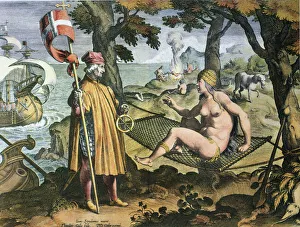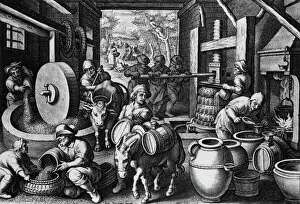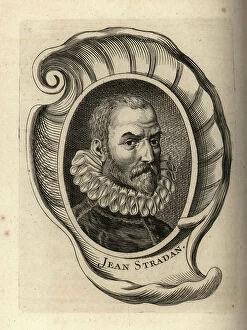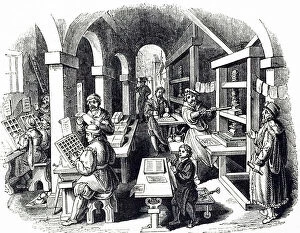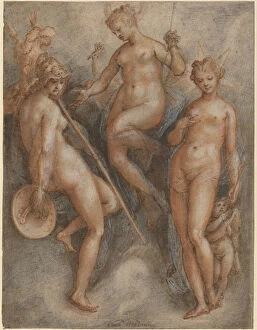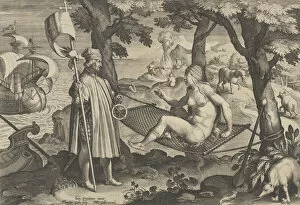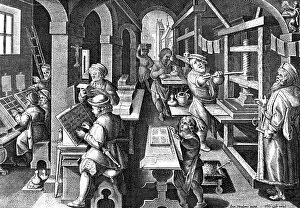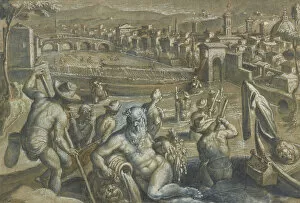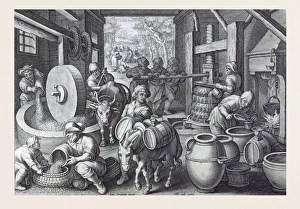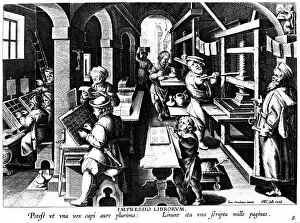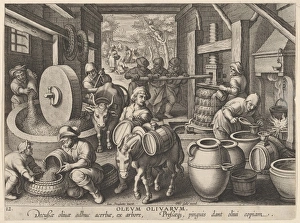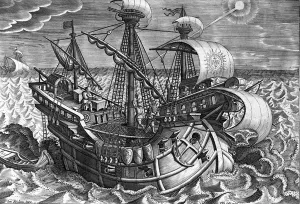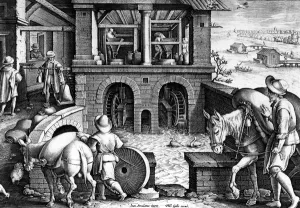Stradanus Collection
Stradanus, a renowned artist of the 16th century, captured significant moments in history through his intricate engravings
All Professionally Made to Order for Quick Shipping
Stradanus, a renowned artist of the 16th century, captured significant moments in history through his intricate engravings. One such masterpiece is the depiction of Amerigo Vespucci's arrival in the New World. In this captivating artwork, Vespucci meets an allegorical representation of America herself. The engraving, skillfully crafted by Theodor Galle after Stradanus' drawing, transports us back to the year 1580. Another remarkable piece from Stradanus is "Oleum Olivarum, " plate 12 from Nova Reperta. Engraved by Philip Galle, it showcases the discovery and production of olive oil during that era. This illustration not only highlights technological advancements but also emphasizes the importance of agriculture and trade. Intriguingly, it also delves into historical events like Alexander the Great watching animals fight. Through his detailed engravings, he brings to life this ancient spectacle that fascinated audiences in the 16th century. The artist's exploration extends beyond historical scenes; he also captures everyday activities such as women spinning silk and heating silkworms on fire in "Vermis sericus. " These images provide insight into various industries and crafts prevalent during that time. Frontispiece to Nova Reperta serves as a testament to Stradanus' versatility as an artist. Engraved by Theodor Galle, it symbolizes new discoveries and inventions emerging during this period – a visual celebration of human ingenuity. Among his works are also depictions of mythological figures like Minerva, Juno, and Venus – three goddesses who embody wisdom, power, and love respectively. Rendered with pen and brown ink on black paper c1587; these drawings showcase Stradanus' mastery over different mediums. Stradanus collaborated extensively with Philip Galle for Nova Reperta series which included notable pieces like "Horologia Ferrea" and "Conspicilla.

